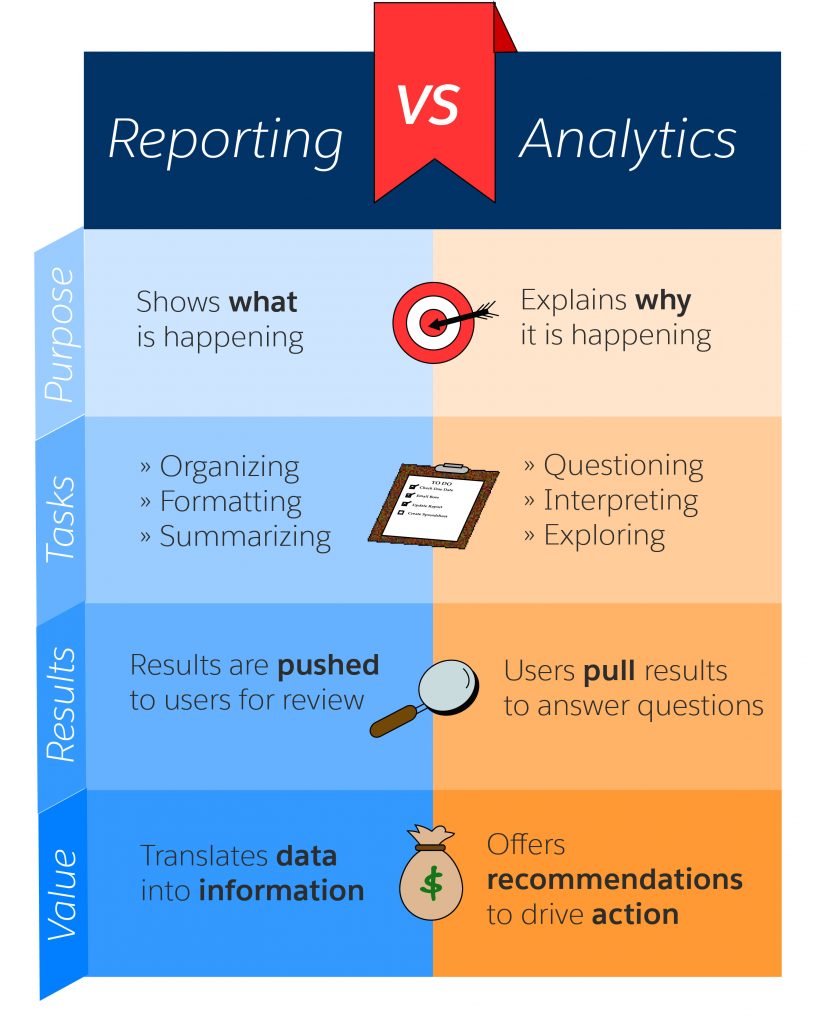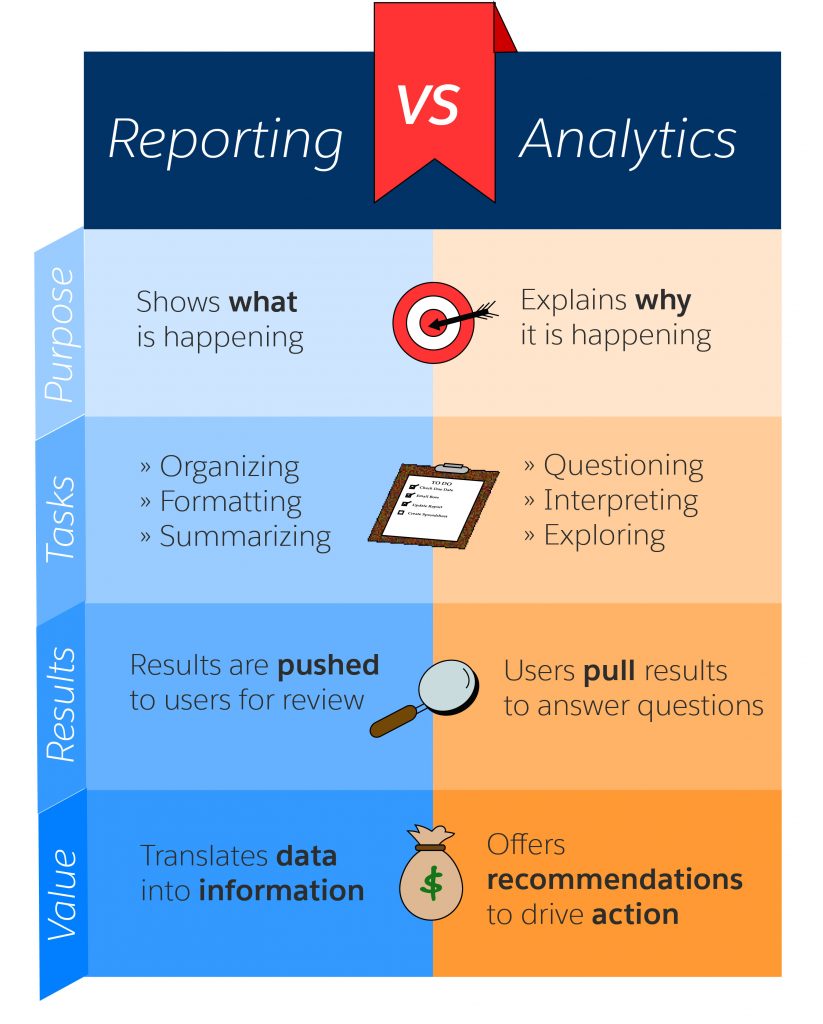As marketers, we crave good reporting—this is how we know if we are successful in our work, and it’s how we demonstrate the value of our campaigns. Enter Pardot. With the power of Pardot and Salesforce reporting, marketers can track the success of their campaigns, measure their audience engagement and understand the impact of their emails. Marketing can also see where and how they’re helping sales close deals – and everyone can see how marketing efforts are impacting the bottom line.
Reports are powerful if you want to look at the state of your business today, but what if you want to look ahead? What if you want to not only see your data but also query it? A recent Forrester study showed that 74% of companies want to make data-driven decisions, yet 71% never quite make it happen. This statistic shows that even if you have good data, getting actionable insights from it can be difficult—there is just too much data, and too many reports!
But don’t worry, Analytics can help. At first glance, reporting and analytics seem interchangeable—both use data, both can create charts and graphs—so what’s the difference? While reports illustrate what is happening, analytics can explain why it is happening. Through reporting, data is summarized and organized in easily digestible ways, but analytics goes one step further and allows you to question and explore that data.
Reporting will translate your data into information, but analytics will provide insights that can drive action—the very thing marketers are missing! In short, if you are struggling to make your reports work for you, analytics may just be your answer. As you get more familiar with our analytics offerings, check out the infographic below to better understand how analytics differs from reporting.



